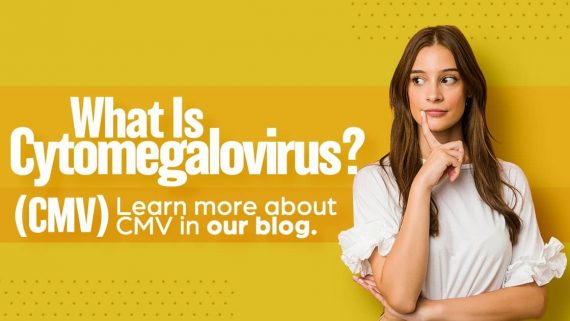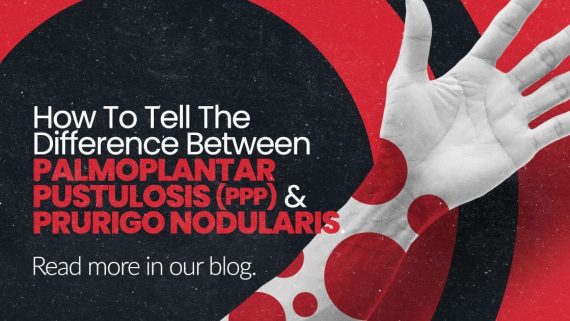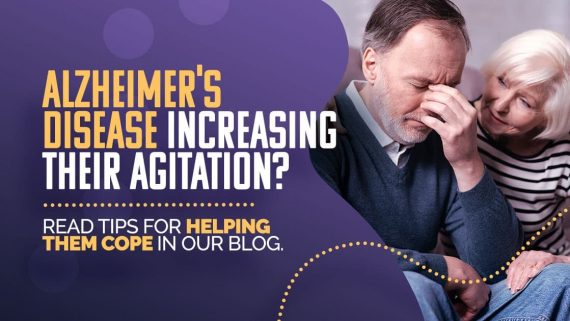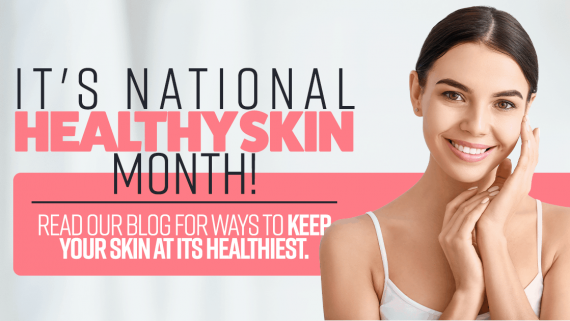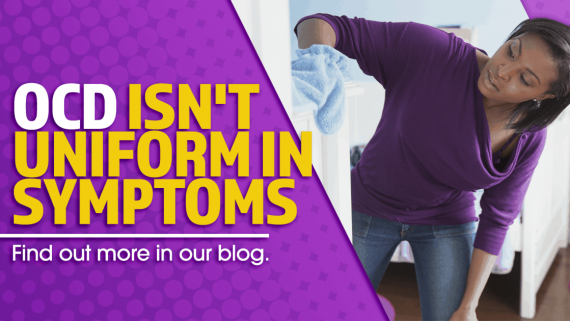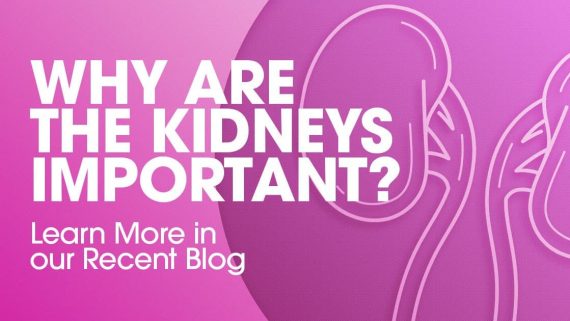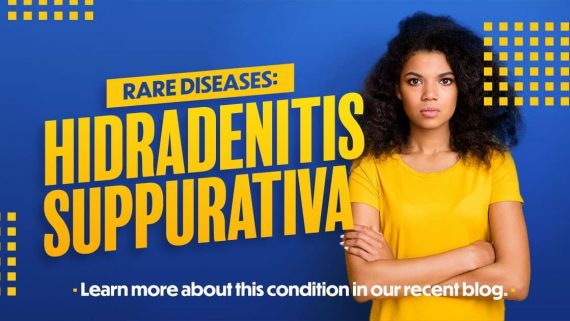We all experience stress, and it’s more prevalent these days amid the COVID-19 pandemic. However, long-term exposure takes a toll on our physical and mental health. Knowing how stress can affect your heart and body can be the biggest inspiration in finding healthy ways to reduce it. This is the message at the heart of the Stress Awareness Month initiative that kicks off every April.
Fight-Or-Flight: The Stress Response
The stress response is a series of changes that occur in the body to take care of a real or perceived threat. Stressors are different for everyone and are any situations a person perceives as mentally or physically terrifying. When a stressor triggers our stress response, our body goes into fight-or-flight mode. Your heart beats faster, breathing increases, and muscles tense up. Once the threat is gone, the body functions return to normal.
The stress response is a short burst of heightened awareness that dissipates with the threat. In today’s world, there are fewer physical and more psychological stressors such as:
- Parenting
- Financial issues
- Family or relationship difficulties
- Pressure at work
The Constant State of Heightened Awareness

Some stressors can take a while to resolve, meaning the threat is always present. It also means the stress response stays on, and the body is in a constant heightened awareness state. Long-term exposure to chronic stress takes a toll on the mind and body. Irritability, anxiety, depression, and insomnia are some of the mental health symptoms of chronic stress. No system in the body is safe from the effects of stress. At the same time, it also increases our risk of certain conditions. For example:
· Muscles– Contracting the muscles for prolonged periods can lead to tension headaches and migraines.
· Heart– Stress increases the heart rate and strength at which the heart muscle pumps. Doing this increases the size of the blood vessels and arteries. This raises the blood pressure and can eventually damage the blood vessels and lead to heart disease.
· Liver– The energy boost during the stress response comes from the liver, increasing the blood sugar it produces. Over time, higher blood sugar levels significantly raise your risk for type 2 diabetes.

You Can’t Avoid Stress, But You Can Manage It.
You can’t always avoid every stressful situation. Therefore, we have to learn effective ways to manage stress and reduce its effects on the body. Though every person’s needs will vary, a healthy diet, regular exercise, and relaxation techniques are some coping strategies helpful in managing stress.
Living with a chronic health condition can be stressful. Participating in clinical research studies can help you prioritize your health while you help advance care options for your condition. Volunteering also has many mental health benefits and has been shown to reduce anxiety and depression.

Visit our website to view a list of enrolling studies in your area today!
Sources:
https://www.heart.org/en/news/2020/02/04/chronic-stress-can-cause-heart-trouble
https://www.verywellmind.com/stress-and-health-3145086
Cytomegalovirus (sy-toe-MEG-a-low-vy-rus) (CMV) is a common virus that’s undoubtedly a tongue-twister. Even with a name that’s 15 letters long, many people know little about it. The majority of individuals who contract CMV are not aware they have it. Unfortunately, lack of awareness isn’t a positive thing in this case. Cytomegalovirus has a more nefarious side that preys on the most vulnerable populations. Through education and research, we are ending the commonality of CMV.
What is CMV, and How Common is it?
The virus that causes human CMV infections belongs to the herpes virus family. Once an individual contracts CMV, it stays with them their entire life. Like other herpes viruses, it can remain dormant and then reactivate. Re-infection from another strain is also possible.

The Centers for Disease Control and Prevention (CDC) estimates that between 50 and 80 percent of people in the United States have had a CMV infection by the time they are 40 years old.
Symptoms and Vulnerable Population for Severe Disease
In most cases, individuals with a CMV infection don’t experience symptoms, thus making them unaware they have it. Mild symptoms generally consist of fatigue, fever, sore throat, and muscle aches. Below are the three main populations at risk for severe CMV symptoms and complications:
- Congenital CMV: When an infant gets a CMV infection before birth.
- Severe symptoms include jaundice, fever, and enlargement of the spleen and liver.
- Perinatal CMV: When a baby is infected with CMV during or shortly after birth.
- Infants that contract CMV after birth can face deafness, blindness, and other long-term neurological complications such as intellectual disabilities.
- CMV infection individuals with weakened immune systems:
- Severe symptoms include advanced pneumonia and inflammation of the retina that can lead to blindness. Stomach and esophagus ulcers and infections in the brain can also occur.
Transmission and Prevention of CMV
Once CMV infection occurs, the virus can also pass into body fluids, such as saliva, urine, blood, tears, semen, and breast milk. Therefore, individuals with CMV can spread it to others in the following ways:
- From direct contact with saliva or urine, especially from babies and young children
- Through sexual contact
- Nursing infants from breastmilk
- Through transplanted organs and blood transfusions
In addition, pregnant women who have CMV can also pass the virus to their baby while still in the uterus or during birth. About 1 out of 200 babies is born with congenital CMV. Out of the babies infected, 1 in 5 will have symptoms or a long-term health problem that may be present at birth or develop after. As a result, CMV is the most common infectious cause of congenital disabilities in the U.S. Despite this, CMV is preventable. You can find general prevention tips and screening information for women of childbearing age and those currently pregnant on the National CMV Foundation website.

Antiviral medications are the traditional form of treatment because they can slow the spread of the virus. Even though none of the available therapies can eliminate the CMV virus, researchers are studying potential new options to treat and prevent it. ActivMed Practices & Research is looking for healthy women to join our CMV vaccine studies at our Methuen, MA location.

Apply today via our website or contact us at (978) 655-7155.
Sources:
https://www.nationalcmv.org/overview/start-here
Palmoplantar pustulosis (PPP) and prurigo nodularis (PN) are a pair of tongue-twisting skin conditions we’re conducting clinical trials for. Though neither is very common, you can easily confuse the two because of their similarities. Here’s how to tell the difference between palmoplantar pustulosis and prurigo nodularis.
Symptoms of PPP and PN
PPP is a rare form of psoriasis where tiny blisters develop on the palms of hands and soles of feet. As the blisters dry up, they can turn brown and scaly, and deep cracks can form. PPP can be itchy and painful and cause a burning sensation in the hands and feet. As a result, patients may have difficulty walking comfortably or using their hands without pain.

PN affects the skin by causing hard, itchy bumps to form on the arms, legs, upper back, and abdomen. The itching is usually very intense, and patients often scratch themselves to the point of bleeding or pain. Loss of sleep, scarring, and changes to the skin’s surface are some of the most common impacts of PN.

Potential Causes
So far, we know that both conditions involve bumps that can be itchy and painful. On the other hand, they differ in:
- Location on the body
- Type of bump (blister vs. hard bump)
- Itch severity
- Ways they impact patients’ lives
Researchers are still working to identify the exact cause of both conditions better, though there are some potential factors for PPP include:
- An effect of nicotine on the sweat glands of the hands and feet since most patients are current or former smokers
- Family history
- Medication side effects
- Infections
For PN, researchers believe the “itch-scratch-itch cycle” is a significant player in developing this condition. PN begins with itchy skin that causes the uncontrollable urge to scratch and rub it. After about six weeks, the hard bumps form in the areas you’ve been scratching and rubbing. Many people who develop PN already have another condition that makes their skin extremely itchy, like eczema. Individuals with this condition also have thicker nerve cells in the skin, which may mean the signals letting the brain know the skin is itchy are more substantial than someone without PN.
Treatment
Treating both conditions involves a combination of therapies that you apply to the skin, take by mouth, or inject. These aim to:
- Remove or lessen the appearance of bumps
- Reduce the itchiness
- Suppress the overactive response from the immune system
- Control inflammation
In addition, habit reversal therapy is another part of treating PN that helps reduce the frequency of scratching. This technique uses awareness training and behavior modification therapy to create alternatives to scratching the skin.
ActivMed Practices & Research is looking for individuals with PPP and PN to join enrolling research studies evaluating potential new care options. To see if you may qualify, visit the Portsmouth, NH webpage for our PPP studies or visit the Beverly, MA webpage for our PN studies today!
Sources:
https://www.aad.org/public/diseases/a-z/prurigo-nodularis-treatment
https://rarediseases.info.nih.gov/diseases/7480/prurigo-nodularis
When living with atopic dermatitis (eczema), setting up a good skincare and moisturization routine is important for managing symptoms and preventing flares. Keeping the skin clean is one of the many reasons bathing and eczema go together like peanut butter and jelly.
Eczema and Dry Skin
The uppermost layer of our skin is what keeps irritants, bacteria, viruses, and allergens from getting into our bodies and moisture from getting out. Eczema is a skin condition that affects this layer and causes dry skin and a variety of symptoms, including:
- Itchiness
- Swelling
- Redness
- Scaling

Eczema also causes your skin to be more sensitive to irritants, leading to a flare-up. A flare-up is a phase of eczema where you experience worsening severity of one or more of the symptoms. Common triggers may include:
- Extended exposure to dry air
- Extreme heat or cold
- Some types of soap, shampoo, bubble bath, body wash, facial cleansers
- Laundry detergents and fabric softeners with chemical additives
- Certain fabrics like wool or polyester in clothing and sheets
- Metals, especially nickel, in jewelry or utensils
Soak and Seal

Individuals with eczema tend to have drier skin and are sensitive to encounters. Proper bathing and moisturization are good ways to keep the skin clean and prevent drying out. The “Soak and Seal” method is what many providers recommend to combat dry skin and reduce flares. To get the full therapeutic benefit, follow these steps:
- Take a bath using lukewarm (not hot) water for 5 to 10 minutes. Use a gentle cleanser (no harsh soaps) and avoid scrubbing the affected skin.
- After bathing, pat the skin lightly with a towel leaving it slightly damp.
- Apply a topical prescription medication to the affected areas of the skin per your doctor’s instructions.
- Within three minutes, liberally apply a cream or ointment type of moisturizer all over the body.
- Wait a few minutes to let the moisturizer absorb into the skin before dressing or applying wet wraps.
Eczema Symptoms Can be Persistent.

Do you have eczema and are experiencing persistent symptoms? Clinical research studies may help! As a research volunteer, you can help advance future care options for yourself and other individuals living with eczema. To learn more about currently enrolling eczema studies here at ActivMed, contact our Portsmouth, NH location at (603) 319-8863 or visit our website.
Sources:
https://www.aad.org/public/diseases/eczema/childhood/itch-relief/baths-moisturizer
Alzheimer’s disease is a progressive neurodegenerative disorder. It initially causes forgetfulness that advances to severe memory and thinking impairment. Individuals with Alzheimer’s typically experience behavioral and psychological symptoms, such as agitation, increasing the burden on the caregiver. If your loved one is experiencing Alzheimer’s disease with signs of agitation and is struggling to cope, here’s what you need to know.
Agitation with Alzheimer’s Disease Is Common
Agitation is a common behavioral symptom that most patients with Alzheimer’s will experience. They may feel restless, causing a need to move around and pace, become upset in certain places, or when focused on specific details. The signs of agitation include:
- Rapid, exaggerated changes in mood
- Restlessness
- Irritability
- Aggression
Agitation is distressing and debilitating, causing significant negative consequences for patients and caregivers. Hence, it is one of the most common reasons patients with Alzheimer’s transition to nursing homes and other long-term care settings.
How to Cope and Make History in the Treatment of Agitation with Alzheimer’s Disease
If your loved one has Alzheimer’s and is showing the signs and symptoms of agitation, contact their doctor immediately. Their provider can identify other potential causes, such as underlying health conditions, circumstances, and medication interactions, and determine the best possible treatment path.
Steps you can take to reduce or prevent agitation include:
- Remove stressors – Create a calm environment, reducing noise, clutter, and the number of people present at a given time.
- Keep a routine – Set a schedule for bathing, dressing, and eating meals at the same times each day.
- Be calm- Speak calmly, listen to their concerns, and provide reassurance. Ensure their personal comfort needs are met for fatigue, hunger, skin irritations, digestive issues, etc.
- Help them feel secure – Keep familiar objects and photographs of friends and family around the house.
Furthermore, caregivers may need help with coping. To help ease the impact of caring for a loved one with agitation and Alzheimer’s disease, you can:
- Make your health a priority. Keep your regular appointments, get enough sleep, and eat healthy foods.
- Take time each day to do something you enjoy.
- Talk with other family members about stepping in, so you can get a break. It may even be helpful to look into respite options in your area.

Currently, there are no therapies approved by the FDA to treat the signs and symptoms of agitation in patients with Alzheimer’s disease. However, every FDA approval of new medicine starts with a clinical research study, as they provide the key tools used to find better ways to treat, detect, and prevent medical conditions.
ActivMed Practices & Research is currently looking for individuals to join a research study looking into new options for the treatment of Alzheimer’s. If your loved one experiences agitation with Alzheimer’s disease, please contact our location in Lawrence, MA to learn more at (978) 655-7155 or visit our website today!
Sources:
https://www.alz.org/help-support/caregiving/stages-behaviors/anxiety-agitation
https://www.nia.nih.gov/health/coping-agitation-and-aggression-alzheimers-disease
Every year thousands of individuals become seriously ill and require hospitalization because of diseases that vaccines can help prevent. Many face long-term health complications or succumb to the symptoms of these diseases. Germs are all around us, and protecting our bodies from developing a serious illness goes beyond self-preservation. Vaccines are important. Here’s why.
The Soldiers, the Officers, and the Generals of Immune Response
When a pathogen (virus, bacterium, parasite, or fungus) enters the body, the immune system sends antibodies to fight it off. Whether you get sick or not depends on how effective they are and your immune system’s strength. If sickness occurs, the immune system targets a specific part of the pathogen that shows how to eradicate it. These instructions help to create a type of super antibody specifically trained to kill a pathogen. Lastly, another antibody group is created to remain in the body with the playbook of instructions for any potential future encounters with that particular disease.
Imitation is the Best Form of Flattery
Immunity after infection is tricky because you have to get sick first. When the disease has a high mortality rate or the person has pre-existing conditions that increase the risk for severe infection, gaining immunity naturally is a gamble. Vaccines mimic the body’s natural process by using weakened or inactive parts of the pathogen. Other vaccines only contain the kill instructions and don’t use parts of the virus. Each type is designed to trigger our immune response without having to get sick.

Vaccines Save Lives and so Much More
The ongoing COVID-19 pandemic is a painful reminder of how widespread sickness and loss of life strain the economy, healthcare, national funding, and more. Thanks to clinical research, available vaccines distributed over the last year and a half have made normalcy a reality again.
Bottom line, vaccines are essential because they save lives and:
- Protect us from spreading an illness to our loved ones and others.
- Reduce the likelihood of an outbreak from preventable diseases.
- Help protect individuals who are medically unable or too young to receive immunizations.
- They are very effective in preventing severe disease.
- The safest way to protect your health, so you don’t have to miss work or time with your loved ones.
RSV season is upon us. Respiratory syncytial virus is a common illness that causes cold-like symptoms that can be serious in infants and older adults. ActivMed Practices & Research is looking for individuals to join RSV vaccine studies at our Beverly, MA, Methuen, MA, and Portsmouth, NH locations.

To learn more about how you can get involved in our RSV or other vaccine studies, click here for contact information to your local office and their active studies.
Sources:
https://ftp.historyofvaccines.org/content/articles/top-20-questions-about-vaccination
https://www.cdc.gov/vaccines/adults/reasons-to-vaccinate.html
https://vaccineinformation.org/vaccines-save-lives/
November marks the celebration of the body’s largest organ, the skin. Nevertheless, it’s no secret that having healthy skin starts with taking care of it all year round. In fact, the American Academy of Dermatology sponsors National Healthy Skin Month each year, and their website features a wealth of resources on what it takes to keep the skin healthy, as well as advice from dermatology experts on how to treat and prevent common skin problems.
Your Skin Is Important Because…
It serves many essential functions like:
- Protection against trauma
- Regulation of body temperature
- Maintaining the balance of water and electrolytes
- Recognizing painful and pleasant stimuli
- Helps in synthesizing vitamin D
The skin keeps vital nutrients in the body while providing a barrier against dangerous substances from entering the body. For example, it provides a shield from the harmful effects of ultraviolet radiation from the sun. Moreover, the color of your skin, its texture, and folds help differentiate people as individuals. The skin consists of three layers, and each is responsible for performing specific tasks.
- Epidermis– The outermost layer of the skin that creates a waterproof barrier and skin tone.
- Dermis– The next layer of the skin that gives the skin its flexibility and strength. The dermis contains nerve endings, sweat glands, oil glands, hair follicles, and blood vessels.
- Fat layer– Below the dermis is a layer of fat that helps insulate the body from heat and cold. It also provides protective padding and is used as an energy storage area.
#YourHealthiestSkin

You can celebrate National Healthy Skin Month by:
- Visiting the AAD website to learn ways to take care of your skin better by exploring one of their many online resource articles.
- Sharing your healthy skin story on social media using the hashtag #YourHealthiestSkin
- Doing a self-skin check for changes and potential spots for skin cancer. See a dermatologist immediately for any concerns.
Furthermore, managing chronic skin conditions can be challenging, especially when symptoms persist despite trying several options. Participating in clinical research studies is a great way to potentially gain access to the newest cutting-edge options before being made available to the public. Clinical research volunteers can also have the opportunity to learn more about their condition from study medical staff, which may even lead to the better management of conditions.

ActivMed Practices & Research has several dermatology studies currently enrolling that are looking into possible new options. Explore your options today by clicking here for our Beverly, MA location and here for our Portsmouth, NH office.
Sources:
https://www.aad.org/public/public-health/awareness-campaigns/national-healthy-skin-month
https://nationaltoday.com/national-healthy-skin-month/
Did you know that over 50 million Americans are living with chronic pain? September is Pain Awareness Month, and its initiative is to raise awareness about the issues that sufferers face every day. In the race to advance chronic pain management, clinical research studies are here to provide a path for bringing improved therapies closer to the patients who need them.
Managing Chronic Pain
Chronic pain can originate from many sources. These include injuries, illnesses, and prolonged physical, emotional, or social stress. Though the brain decides when you are in pain, this does not mean that the pain is in your head. For instance, a broken body part isn’t always the cause of pain. The more signals received to the brain, the more the brain labels the signals as pain. When this occurs, it often prolongs the difficulties that come with experiencing pain.
These tips, when used consistently and together, can help you manage chronic pain:
- Try whole-body stretches, gentle yoga, or tai chi for about 10 to 15 minutes daily.
- Stay active.
- Reduce stress and practice relaxation techniques.
- Pace yourself.
- Address other conditions that worsen the pain.
- Managing pain often means creating opportunities to be positive. Taking part in enjoyable activities has been shown to decrease the effects of pain signals in the body.
- Stay connected with others.
- Get the sleep you need.
Pain Awareness Month
September marks a time to raise public awareness around pain, pain management, and the great work pain professionals do during the month and beyond.
This year, the focus is on the vital importance of an individualized, multidisciplinary, and multimodal approach to pain care. Use the tools on the International Association for the Study of Pain’s webpage to share important information on social media, access the latest research and science around pain, and help shed light on the pain field.

Potential new options are being evaluated in clinical research studies for chronic pain. You can get involved in helping to improve healthcare for individuals with chronic pain by volunteering in clinical research studies.
To learn more about the studies enrolling at our Methuen, MA location, click here, or call (978) 655-7155. Other studies involving potential new therapies for conditions that cause chronic pain are enrolling, too. Click the links to explore these studies at our Portsmouth, NH, Beverly, MA, and Lawrence, MA locations.
Sources:
Respiratory syncytial virus (RSV) is so common that most children get it before the age of two years. Healthy people usually experience mild, cold-like symptoms and recover within a week or two. However, the RSV virus can have serious effects on older adults, as well. In the U.S. specifically, RSV has caused an estimated 177,000 hospitalizations and 14,000 deaths in people aged 65 and older every year.
Here’s what you need to know to have a better understanding of the virus.
What is RSV?
RSV is a virus that causes respiratory illness which covers the nose, throat, and lungs. It typically mimics a mild cold leading to symptoms, such as:
- Runny nose or congestion
- Dry cough
- Low-grade fever
- Sore throat
- Sneezing
- Headache
In severe cases, the infection can spread to the lower respiratory tract, causing inflammation of the small airway passages entering the lungs. Examples of severe infection symptoms include:
- Fever
- Severe, persistent cough
- Wheezing
- Difficulty breathing
- Bluish color of the skin due to lack of oxygen
Causes and Risk Factors
RSV symptoms usually begin within 4 to 6 days after exposure, and infected individuals are generally contagious for 3 to 8 days. The virus can be transmitted in several ways. For example, it can be spread through the respiratory droplets of an infected person, touching contaminated surfaces with the virus on them, or direct contact, like kissing the face of anyone with RSV.
While people of any age can get RSV, those at the highest risk for severe disease include:
- Premature infants
- Young children with heart or lung diseases
- Adults and young children with compromised immune systems
- Older adults, particularly those with pre-existing heart or lung disease
Prevention and Treatment
To prevent the spread of RSV, experts recommend engaging in health-protective behaviors. These behaviors include proper handwashing, avoiding close contact with others, covering coughs and sneezes, and not sharing personal items. Frequently cleaning toys and surfaces is essential, too.
Most RSV infections resolve on their own in a week or two, and for those who have contracted RSV, there are treatment options available. These options consist of self-care measures to make patients more comfortable, as well as over-the-counter therapies that help clear congestion, reduce fever, and keep people hydrated. However, if severe symptoms persist, you may need hospital care.

Fortunately, researchers are working to develop vaccines and treatments to help fight RSV, as potential new options are currently being evaluated in clinical research studies. If you’re an adult over the age of 60 and are interested in learning about how you can get involved with upcoming RSV studies here at ActivMed Practices & Research, please call us today at (978) 969-6897!
Sources:
With back to school in full force, it’s fitting August is also National Immunization Awareness Month (NIAM). The annual event highlights the importance of vaccination for people of all ages. Immunization is the single most crucial health measure you can take to protect yourself and your loved ones.
Vaccine Importance
Vaccines are much like a manual for your body that shows how to recognize and defeat a harmful disease. Scientists and researchers take weakened or dead parts of a virus in the vaccination. This exposes your body to an illness so it can create antibodies for it—all without the risk of complications from a live version.

Over 20 widely used vaccines are available today for severe illnesses like measles, meningitis, pneumonia, smallpox, and polio. Many of these diseases once ran rampant, leaving trails of death, disability, or serious illness. For example, smallpox has killed an estimated 300 million people since 1900. Thanks to widespread immunization efforts that eradicated it in 1977.
Though eradicated, the germs that cause smallpox and other viruses we vaccinate against continue to circulate in parts of the world. Now more than ever, the ease at which illnesses can travel to other parts of the world means we are all at risk. The World Health Organization estimates vaccines save over 4 million children alone every year.
National Immunization Awareness Month
NIAM is the perfect time to get with your health provider. They can ensure you and your loved ones are current on your vaccines and answer any questions you may have. The CDC has an interactive guide and other immunization tools to see recommendations by age group. You can also spread the word to others by using the hashtag #NationalImmunizationAwarenessMonth in social media correspondence.
Participating in clinical research studies may also be an option for those interested in getting vaccinated. ActivMed Practices & Research has current opportunities to get involved in now, and more are starting soon. At the moment, we are enrolling participants for meningitis vaccine studies at our Beverly, MA and Methuen, MA locations.

Our COVID-19 vaccine booster studies that include either the flu or shingles immunization will begin enrolling shortly. We also have an RSV vaccine study starting soon too! To add your name to our list to call for additional information, click here to select your location for contact information or fill out the “future studies” form to submit your information electronically.
Sources:
https://www.who.int/news-room/q-a-detail/vaccines-and-immunization-what-is-vaccination
https://nationaldaycalendar.com/national-immunization-awareness-month-august/
https://www.history.com/news/the-rise-and-fall-of-smallpox
Summer typically means spending more time outside doing all the summer-y things most of us love. However, the increased exposure to sunlight and heated air can turn some skin conditions upside-down. Fortunately, you can take some simple steps to avoid flare-ups during the summer, which can quickly ruin your fun. Here are a few examples.
Hidradenitis Suppurativa and Summer
For Hidradenitis Suppurativa (HS), it is clear that prolonged exposure to heat exacerbates symptoms. You can still enjoy the summer by taking a few precautions along the way, such as:
- Wear lightweight clothing to keep you cool. Opt for fabrics with UV protection and that are made from lightweight materials like polyester that are moisture-wicking.
- Drink enough water to keep hydrated throughout the day. Also, supplement with coconut water, homemade juices, and smoothies to change things up.
- Avoid direct sun as much as possible. Use a portable mini fan to help in other cases.

Keep in mind it’s also important to be mindful of how your body always feels. Always be on the lookout for signs you may be getting overheated. Two of the most common heat-related illness are heat stroke and heat exhaustion. Some symptoms are dizziness, fatigue, headaches, nausea, confusion, fast pulse, and elevated body temperature.
Atopic Dermatitis (Eczema) and Summer
When UV therapy is a treatment for eczema-prone skin, you may wonder why summer isn’t always sweet for individuals who have it. Sweating is the number one enemy in the summer since it contains various things that can irritate broken skin, like that in eczema. Typically, it worsens in areas that trap moisture like the elbows, back of the neck, or the backs of the knees. Beat summer eczema flare-ups with these tips:
- Avoid sweating by staying cool. Stick to the shade when outside, and drink plenty of water to keep your body temperature at an average level.
- Choose a mineral sunscreen versus a chemical one. These should have the words “physical” or “mineral” on the bottle with ingredients in them like zinc oxide and titanium dioxide.
- Rinse off after swimming and change out of wet clothes as soon as possible. If you can’t rinse off, keep a spray bottle with clean water and spray off your skin. Always bring a dry change of clothes to change into if you get sweaty or after swimming.

Beat the Summer Heat. Join a Dermatology Study Today!
Many of the tips above are great when managing most skin conditions this summer, along with keeping your skin moisturized. If you’re still looking for a way to give back this summer and beat the heat, consider one of our enrolling dermatology studies here at ActivMed Practices & Research. We have studies for psoriasis, eczema, hidradenitis suppurativa, facial acne, and more! To learn more, click to visit our Beverly, MA, and Portsmouth, NH locations for details today!
Sources:
https://www.everydayhealth.com/eczema/strategies-avoiding-eczema-flare-ups-summer/
https://hsdisease.com/living/beat-heat
https://www.aad.org/public/everyday-care/skin-care-secrets/routine/prevent-summer-skin-problems
On July 7th, chocolate lovers around the globe will guiltlessly indulge in their favorite treat during World Chocolate Day. Though chocolate connoisseurs may argue the benefits of responsible consumption, its impact on migraines isn’t always clear. Is it a trigger or a warning of an impending attack? In truth, the relationship between chocolate and your migraine is as unique as you are.
To Eat, or Not to Eat
Migraines are often triggered by different environmental, physical, and emotional factors. Changes in routine, dehydration, and stress are the most common. Excessive consumption of caffeinated products can contribute to the onset of a migraine. All chocolate has some caffeine in it. So, if that is a trigger for your migraines, you may want to consider that.

On the other hand, many people reportedly crave sweet food such as chocolate before the pain of a migraine. This leads them to conclude that eating sweets are causing their migraines. However, sometimes those cravings are symptoms of the beginning of an attack. Identifying what’s triggering your migraines and recognizing common symptoms before an attack are both crucial in managing your condition better. Therefore, knowing how chocolate affects your migraines is one way to help!
World Chocolate Day
Since 2009, World Chocolate Day celebrates all kinds of goodies made from chocolate. It is also the anniversary of when chocolate was first brought over from Europe on July 7th, 1550. Since then, the dark treat has led to the creation of chocolate milk, hot chocolate, chocolate candy bars, chocolate cake, brownies, and many other favorites. You can join in the chocolate-themed celebration by enjoying your favorite dessert, reading a related book, or learn more about chocolates around the world. Whatever you do, share it on social media using the hashtag #WorldChocolateDay!

Although the effects of chocolate are unique to each person with migraines, a surer way to help migraine symptoms is through clinical research studies. By participating in migraine research studies, you play a personal role in advancing options for current and future generations. You also learn more about your condition and may gain access to potential new opportunities not yet available to the public.
Migraines are also common in children, which drives the need for designing age-appropriate therapies for safer, more effective outcomes. ActivMed Practices & Research is currently enrolling migraine studies for children aged 6-17 at our Lawrence, MA location. To learn more, call (978) 992-4239 or visit our website.
Sources:
https://nationaldaycalendar.com/world-chocolate-day/
https://www.migrainetrust.org/about-migraine/trigger-factors/common-triggers/
Obsessive-compulsive disorder or OCD is a chronic anxiety disorder that affects 1 in 40 Americans. Neatness and germaphobia are often what come to mind when people hear the term. In actuality, these are some of many rituals created to satisfy repeated, unwanted thoughts. OCD isn’t uniform and goes beyond a color-coded planner or organized pantry. It is so much more.
Obsession Categories and Associated Compulsions
OCD is a never-ending cycle of obsessions and compulsions. Obsessions are unwelcome thoughts or urges that repeatedly play out in patients’ minds, creating immense anxiety and stress. These typically warn of impending doom which triggers a patient’s compulsion to act out certain behaviors or rituals to dispel the thoughts or relieve stress. The relief is only short-term, and the thoughts return, and the cycle is repeated over and over-consuming an hour, sometimes several each day.
Those with OCD know their thoughts and actions are not rational and wish they could be free of them but feel helpless to stop them. For instance, suppressing OCD behaviors end up worsening symptoms, so it’s not something you can stop on your own. There are several categories of obsessions and various associated compulsive behaviors. These generally include:
Common Obsessions:
- Intrusive Thoughts
- Unwanted Thoughts
- Repetitive Thoughts
- Racing Thoughts
- Violent Thoughts
- Sexual Thoughts
- Religious Blasphemy Thoughts
Common compulsions:
- Avoidance
- Reassurance Seeking
- Checking
- Hand Washing
- Excessive Prayer
- Counting
- Comparison Seeking
- Excessive Guilt
Education, Healthy Living, and Treatment
OCD can severely impact one’s social, emotional, and work-related areas of life. However, with effective treatment, healthier lifestyle, and education, most experienced improved symptoms and quality of life.
New tools and ideas on how to better help people with OCD are being investigated in clinical research studies and providing hope to patients. Through patient collaboration, we continue to gain knowledge that improves the lives of current and future generations.

To learn more about enrolling OCD studies with ActivMed Practices & Research, contact our Methuen, MA office at (978) 655-7155 or visit our website.
Sources:
https://beyondocd.org/information-for-college-students/symptoms-of-ocd
Lyme disease is a bacterial infection found throughout the United States and every continent except Antarctica. More than 475,000 Americans are diagnosed every year, but experts believe it is much higher. Lyme disease is treatable, but symptoms are often misdiagnosed as other conditions. Without treatment, the infection can progress into more severe symptoms. Guarding your family against Lyme disease involves a little surveillance and a good plan of defense.
The Best Offense is a Good Defense
Protecting your family from Lyme disease is a multi-faceted approach. To begin, you need to know how the infection occurs. Lyme disease is caused by a corkscrew-shaped bacterium called Borrelia burgdorferi transmitted through the bite of an infected black-legged tick. Avoiding contact with this type of tick is the ultimate goal in a combination of the following measures:
- Surveillance: Check recent surveillance maps of cases reported in your area to see where the infection rate is more widespread. Remember, these are only cases reported, so the map data can only go so far.
- Avoiding Hot Spots: The ticks that can cause Lyme disease mainly live in wooded, bushy areas with long grass. Avoid walking in these areas.
- Repellants, Clothing Care, and Self-Checks:
- Repellants– Use one with a DEET concentration of 20% or higher. Apply products with permethrin to clothing or buy pretreated materials.
- Clothing Care– When in tick hot spots, wear long-sleeved shirts, hats, and gloves. Removed clothing immediately once home and wash and dry on high heat.
- Self-checks– Shower as soon as you get home with a washcloth to remove any unattached ticks. Check your body from head to toe. Underdeveloped ticks called nymphs are the primary transmitters and are about the size of a poppy seed, so look carefully.

Adopting these steps should reduce your chances of Lyme disease significantly. If you discover a tick has attached itself, it will be early and mostly means it didn’t have the 3-4 days it needs to transmit the infection. Even so, alert your provider immediately and keep a lookout for symptoms. You can find a checklist of common symptoms here.
Improving Detection
There is currently no test determining whether a patient has an active infection or whether the infection has been eliminated by treatment. Available lab tests help identify antibodies to the bacteria, which your body takes a few weeks to make after an infection. This makes early diagnosis difficult with lab tests alone, so symptom history, tick prevalence in the area, and other factors are used to close the gap in diagnosis accuracy.
Potential new detection options are under evaluation in clinical research studies, and we need your help! ActivMed Practices & Research is currently seeking participants aged seven and older to join enrolling Lyme disease studies. Individuals currently experiencing Lyme disease symptoms have recently been diagnosed, and those with no prior history of Lyme Disease are welcome to apply.

The studies are being conducted at our Methuen, MA, Beverly, MA, and Portsmouth, NH locations. Click here to select your preferred clinic location, view additional information, and application submission.
Sources:
https://www.mayoclinic.org/diseases-conditions/lyme-disease/symptoms-causes/syc-20374651
https://www.lymedisease.org/lyme-basics/lyme-disease/about-lyme/
Binge eating disorder (BED) involves the repeated compulsion to eat large quantities of food. BED isn’t a lifestyle choice but rather a never-ending cycle you have no control over. It is one of the newest eating disorders the DSM-V recognizes, yet the most common in American. Extreme overeating is one of the many signs you might be binge eating. Let’s look into the others.
Urge, Compulsion, Shame, Repeat.
Binge eating disorder involves recurrent episodes of eating large amounts of food followed by feelings of distress and shame afterward. The amount of food is beyond what anyone would want to eat and often consumed very quickly and to the point of discomfort. Those with BED are aware of their actions but have little control to stop them. They may fast between episodes but do not regularly use other countermeasures to get rid of food or calories by vomiting or excessive laxative use, for example. While it’s common for patients with BED to be overweight, not everyone is.

Binge eating disorder has psychological, behavioral, and physical symptoms that also include:
- Feeling uncomfortable eating around others
- Stomach problems, cramping
- Eating even when already full or not hungry
- Noticeable fluctuations in weight both up and down
- Hoarding or stealing food and storing it in strange places
- Frequently eating alone or in secret
- Dieting often
Long-term physical effects of binge eating can be permanent, even fatal, if not treated in time. A few examples are obesity, heart disease, diabetes, esophagus and stomach damage, and sleep apnea.
Treating Binge Eating Disorder
Treatment for BED aims to reduce the frequency of episodes, manage thoughts related to bingeing, and improve mood. Weight loss and metabolic health[HW1] are addressed as needed for patients at most risk (such as diabetes) but should not be the focus. Cognitive-behavioral therapies (CBT) are the basis of most approaches to BED. CBT is a form of talk therapy. It shows you how to deal with negative behavior patterns by breaking them down into smaller parts.
Vyvanse is the first FDA-approved medication to treat moderate to severe binge eating disorders in adults. Topamax, an anti-convulsant, and some antidepressants have also been shown to help control episodes and other symptoms. Additional options are currently under investigation in clinical research studies.
BED Symptoms Can Feel Uncontrollable. Take Charge Today!

Have you been diagnosed with BED and frustrated with current treatment options? ActivMed Practices & Research is now enrolling studies for individuals diagnosed with binge eating disorder that may help. Get involved today and help advance medicine for BED. Call us at (978) 655-7155, or visit our website for more information.
References:
https://www.beateatingdisorders.org.uk/types/binge-eating-disorder
https://www.nationaleatingdisorders.org/learn/by-eating-disorder/bed
Parkinson’s disease (PD) occurs when the dopamine-producing cells in the brain stop working or die off. PD is progressive and can cause tremors, slowness, stiffness, and other non-motor symptoms. April is Parkinson’s Awareness Month. This year’s theme is #KnowMorePD, focusing on raising the bar and raising awareness for Parkinson’s, and improving the lives of individuals affected.
5 Facts You May Not Know About Parkinson’s:
- British surgeon Dr. James Parkinson discovered it in 1817
- Around 500,000 new cases are diagnosed each year
- Most patients are middle-aged and diagnosed, on average, around age 56
- Small handwriting is an early warning sign
- It has no cure, but there are several effective treatments available

#KnowMorePD
Activities are underway as PD patients, loved ones, and caregivers share their stories, petition local governments, and join one of the many events taking place this month. The goal is to raise awareness about Parkinson’s disease and all the resources available to make patients’ lives better. You can get join the efforts by testing your knowledge of PD with a quiz. You can also learn more about it through any of the following resources:
- Podcast – Every other Tuesday, a new episode of Substantial Matters: Life and Science of Parkinson’s airs. Episodes focus on topics relevant to your daily life, including new therapies, exercise, clinical trials, nutrition, and more!
- Publications – The PD Library is an extensive collection of publications that can help you #KnowMorePD.
- Social media – Follow along and engage with @ParkinsonDotOrg on your social media platform of choice for the newest information for PD.
Volunteers Can Help Change the Future of Parkinson’s

Research initiatives continue to expand treatment options to people with Parkinson’s and, ultimately, help them live better with this condition. Volunteering for research gives you the power to help researchers understand how PD progresses and accelerates medical breakthroughs. To learn more about enrolling Parkinson’s disease studies at ActivMed Practices & Research, call (978) 992-4239, or visit our website.
References:
Many different skin issues exist in the world today. Ranging in severity and various causes, some conditions affect the skin and other parts of the body. Individuals with skin issues often face unseen challenges that lurk beneath the surface. Therefore, managing the complicated nature of skin conditions sometimes requires a collaboration of healthcare providers. Together, they can address the physical, emotional, and social impacts and ensure the overall health of each patient.
Function and Appearance
The skin is a living organism and the body’s largest organ. The skin is also the protective barrier that covers our body and gives rise to our hair, nails, and sweat glands. Also, our sense of touch (hot, cold, and pressure) comes from the skin. Protecting virtually all of our organs, it functions in cooling us in the heat and keeping us warm when we get cold. Your skin is also the most visible of all our organs and is an essential player in viewing ourselves.

Dermatologists specialize in skin and the conditions that may affect it. A few of the most common skin issues are:
- Acne
- Atopic Dermatitis – Eczema
- Hives
- Sunburn
- Rosacea
When the Mind and Skin Interact
Skin issues can have powerful effects on the mind, especially severe ones. Some skin conditions can also worsen in the presence of specific emotional states. In more advanced cases, treating the skin condition and addressing its emotional impacts may be necessary. Psychodermatology involves the interaction between the mind and the skin. There are three categories of psychodermatologic disorders:
- Psychophysiological disorders
- React to emotional states such as stress.
- Primary psychiatric disorders
- Psychiatric conditions that result in skin manifestations like trichotillomania.
- Secondary psychiatric disorders
- Associated with disfiguring skin conditions resulting in psychological problems such as low self-esteem, depression, and social phobia.
Options for Treating Skin Issues
Most skin disorders are treatable, are managed in varying ways. However, most conditions may reappear due to specific triggers, such as stress or illness. Lifestyle changes in addition to your doctor’s treatment plan may help reduce flare-ups. Common therapies include:
- Topical– Medicated creams and ointments
- Oral-Antibiotics and prescription medications
- Injections– Biologics, steroid, or vitamin injections

Clinical research is vital to adequately cover the complexities of the numerous disorders of the skin in existence. As we learn more about these conditions, improved ways to diagnose, treat, and prevent them can be designed. To learn more about the dermatology studies enrolling here at ActivMed Practices & Research, visit our Portsmouth, NH website, or Beverly, MA.
References:
https://www.drugs.com/slideshow/most-common-skin-conditions-1086
The kidneys are remarkably intricate organs located on either side of the spine in the lower back. They are two bean-shaped organs about the size of fists. It’s perfect; they are the size of fists because they are always fighting for your overall health. This is only the beginning of why the kidneys are so important.
What the Kidneys Do
Each of your kidneys contains around a million filtering units called nephrons. Each unit includes a filter, called the glomerulus, and a tubule. The glomerulus filters your blood, and the tubule returns needed substances to your blood and removes wastes. You eliminate the waste when you urinate. The renal artery brings in the blood. Once filtered, it returns to the body through the renal vein. The kidneys process about 150 quarts of blood a day, turning 1-2 quarts into urine.
They also are responsible for:
- Help maintain a healthy balance of water, salts, and minerals—such as sodium, calcium, phosphorus, and potassium—in your blood.
- Make hormones that help:
- Control your blood pressure
- Make red blood cells
- Keep your bones strong and healthy
Why the Kidneys are Important
Even if 10% of your kidneys were working, you might not notice any symptoms or problems. Each heartbeat sends 20% of the blood to the kidneys. Without blood flowing into a kidney, part or all of it could die. Eventually, that can lead to kidney failure. How the kidneys regulate the useful and harmful substances that are in our body is called renal function. Even if they were assisted artificially, like would not continue without the functions they perform.

When a medical condition causes the blood flow to decrease, the kidney can begin to deteriorate. Diabetes is the number one cause of chronic kidney disease in the U.S. High glucose levels cause thickening and damage along with the proliferation of destructive enzymes that make the kidney overwork itself.
World Kidney Day
March 11th is World Kidney Day. The 2021 focus is “Living Well with Kidney Disease.” The goal is to increase education and awareness about effective symptom management and patient empowerment, with the ultimate goal of encouraging life participation. Learn more about and how you can get involved here.
Ensuring patients with kidney disease live well requires us to extend beyond the status quo with research that improves patients’ options. To learn more about enrolling studies for kidney disease here at ActivMed Practices & Research, call 978-655-7155, or visit our Methuen, MA website.
References:
https://www.niddk.nih.gov/health-information/kidney-disease/kidneys-how-they-work
Hidradenitis Suppurativa (HS) is a condition that causes lumps or boils to form in the folds of your skin. Though non-contagious, they are often painful and impact a patients’ quality of life and mental health. Without proper treatment, HS can worsen. Hidradenitis Suppurativa may be a rare disease, but knowing more about it can change that.
HS Signs
The painful lumps can affect one or multiple areas of the body. Areas with hair follicles and many oil and sweat glands are more prone. For example, the armpit, groin, and anal regions. These hair follicles become blocked and develop into HS. They also can develop where skin rubs together like the inner thighs, breast, and buttocks. Signs of hidradenitis suppurativa in these areas include:
- Discomfort in the area where skin can burn, itch, or sweat excessively.
- A painful spot that looks like a deep pimple, boil, or acne cyst.
- Lumps that grow and join together may fill with fluid and become increasingly painful. These may break open and release a foul-smelling liquid.
- Blackhead-like bumps that often appear in twos.
The cause of hidradenitis suppurativa remains mostly unknown. We know that it isn’t the result of poor hygiene but could be connected to hormones, inherited genes, and immune system issues.

Treatment Options for Hidradenitis Suppurativa
At this time, there is no known cure for HS. Thankfully, breakthroughs through research has led to a better understanding of this disease. It has also led to better treatment options for HS. Many patients now receive a treatment plan customized to their needs. Having this condition increases the risk of developing other conditions like heart disease, diabetes, and arthritis. Your dermatologist may work closely with other doctors for this reason. A patient’s HS treatment plan may include:
- Following a daily skincare routine with non-soap products or antiseptic wash.
- Antibiotic creams, systemic drugs, and pain medications.
- Surgical options include removing the affected area of the skin, removing lesions, and uncovering tunnels made by joining abscesses.
- Lifestyle changes such as avoiding tight clothes and products that irritate the skin, maintaining a healthy weight, and staying active.

HS research continues for hope to help improve the care of those with this condition and eventually find a cure. To learn how you can get involved in the hidradenitis suppurativa studies currently enrolling here at ActivMed Practices & Research, call our Beverly, MA location at (978) 969-6897, or visit our website.
References:
https://www.mayoclinic.org/diseases-conditions/hidradenitis-suppurativa/symptoms-causes/syc-20352306
https://www.aad.org/public/diseases/a-z/hidradenitis-suppurativa-symptoms
Around 655,000 Americans die every year from heart disease. It is the leading cause of death for men, women, and most ethnic groups in the U.S. February 2021 is the 57th anniversary of the American Heart Month initiative. In most cases, heart disease is preventable through healthier lifestyle changes. Also, during the month, fundraising events go toward clinical research efforts to improve the care of those with heart disease. Here are some tips that are good for the heart and what research is doing to help.
Love Your Heart

Amid the pandemic, many have adopted unhealthier lifestyles that raises their risk for heart-related conditions. Smoking, high blood pressure, and high cholesterol are key risk factors for heart disease. Diabetes, unhealthy diet, alcohol abuse, physical inactivity, and obesity are medical conditions and lifestyle choices that raise that risk. Here are changes you can make to keep your heart healthy:
- Get 150 minutes of moderate physical activity a week.
- Quit smoking and refrain from drinking too much alcohol.
- Maintain a healthy weight.
- Get regular checkups.
- Control chronic conditions like diabetes, hypertension, high cholesterol.
Healthier living is a journey, but with the support of a community that drives heart-health, anything is possible. Get involved today by taking part in the 7 Days of Self Care initiative or other various events this month.
The Future of Heart Disease
Recently it was discovered that two newer classes of drugs used to treat Type 2 diabetes (SGLT2 inhibitors and GLP-1 RA medications) had been shown to protect patients against heart disease and chronic kidney disease. This means other groups such as people with heart failure with reduced ejection fraction with or without Type 2 diabetes and people with chronic kidney disease who do not have Type 2 diabetes could benefit from these types of medications.

Clinical research must continue so that we can ensure millions of people live longer and healthier. The donations raised and volunteers who participate in research studies make these advancements possible. To learn how you can get involved in one of our heart-related studies with us here at ActivMed Practices & Research, call our Methuen, MA location at (978) 655-7155. You can also view a listing of studies on our website.
References:
https://www.cdc.gov/heartdisease/american_heart_month.htm
https://www.heart.org/en/around-the-aha/february-is-american-heart-month
https://www.nhlbi.nih.gov/health-topics/education-and-awareness/american-heart-month/about
As we pass the first anniversary of the first reported case of COVID-19 in the U.S., a lot of uncertainty remains despite the tremendous progress. Diversity has been a challenge long before the coronavirus, and it’s vital to end the disproportionate impact in communities of color. As clinical research efforts continue to deliver new ways to detect, prevent, and treat COVID-19, study participants’ diversity will be more critical than ever.

Importance of Diversity in Research
Genetics and biological makeup differ for every person. For vaccines, this means how antibodies are produced in one ethnic group can vary from others. Since the pandemic began, data gathered shows much higher rates of infection, hospitalization, and death in people of color.
Diversity also covers various age groups, gender, and backgrounds. Older individuals and those with underlying health conditions are more likely to suffer severe symptoms, hospitalizations, and death as well. The populations with the most significant risk stand to benefit the most from the new possibilities being developed for COVID-19. At the same time, they need to be tested in these groups to ensure they are safe and effective for everyone.
Disparity Causes
Historical mistreatment of minority populations in research studies fuels mistrust and prevents some from participating. Though safeguards, ethical laws, and oversight by the FDA have made research studies much safer, the past is still fresh in minds. Others feel they lack the tools to make it to appointments due to lack of transportation, inability to leave work early, childcare needs, and so on. The reality is that many studies offer options to help with those challenges, such as reimbursement for time and travel, transportation help, and extended hours.
By talking with the study office, you can learn more about the study, potential risks, and possible benefits. The commitment for each study varies. A vaccine study may last two years, while an antibody study may be one visit for example. While there are criteria for each that must be met, flexibility of choice is always a bonus. Volunteering in clinical research studies is 100% voluntary throughout the entire process. You can end your commitment at any time in the event you cannot continue.

ActivMed Practices & Research is proud to be a part of history in the fight to end COVID-19. Our site participated in the large AstraZeneca vaccine study, as well as other antibody test studies. Get further details about enrolling COVID-19 studies here.
Without the selfless gift our volunteers offer, the progress made thus far wouldn’t be possible. To learn more about volunteering or view a current list of enrolling studies at each of our sites, visit our website.
References:
https://hub.jhu.edu/2020/11/30/diversity-covid-19-vaccine-trials/
https://www.henryford.com/blog/2020/11/diversity-in-vaccine-trials


